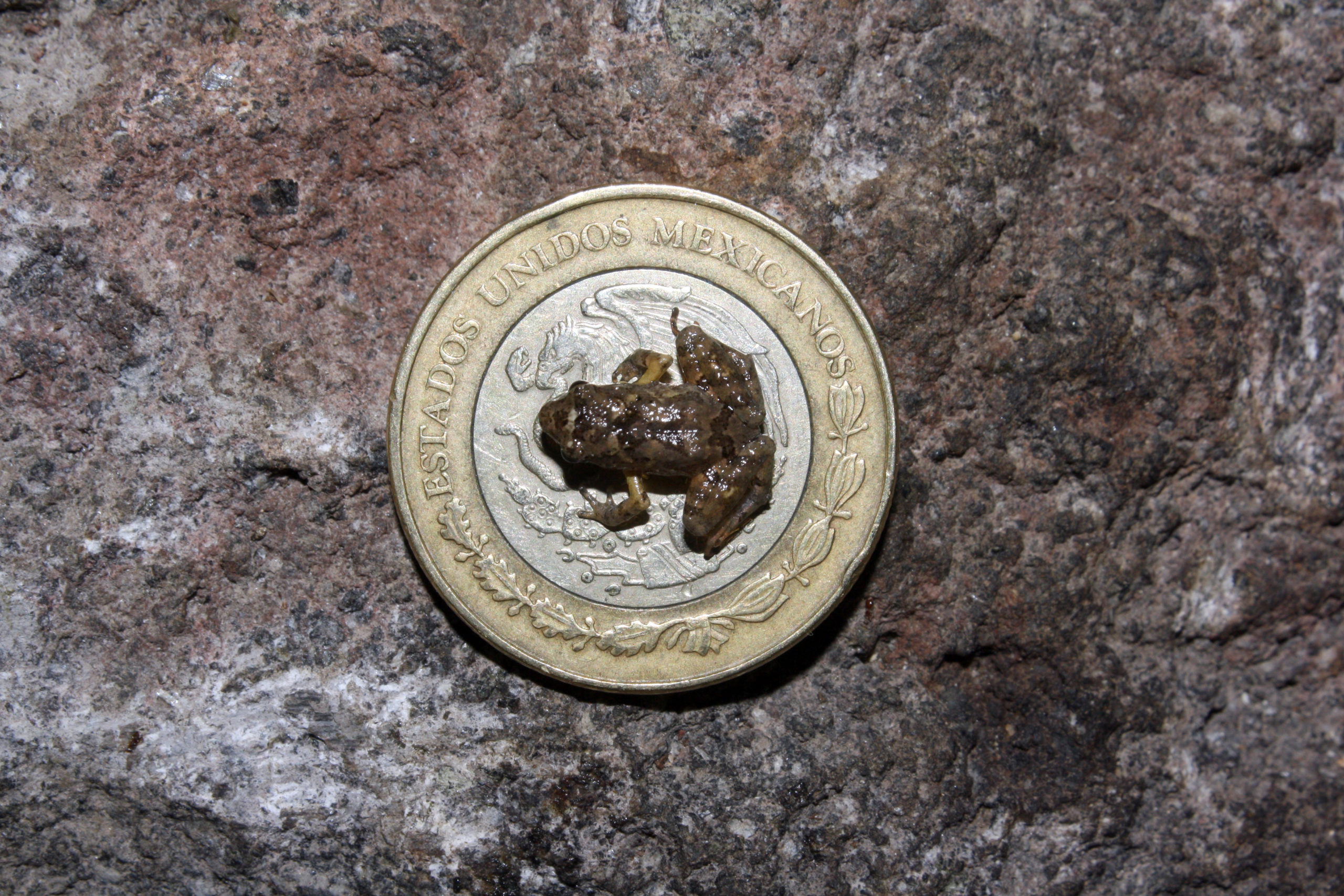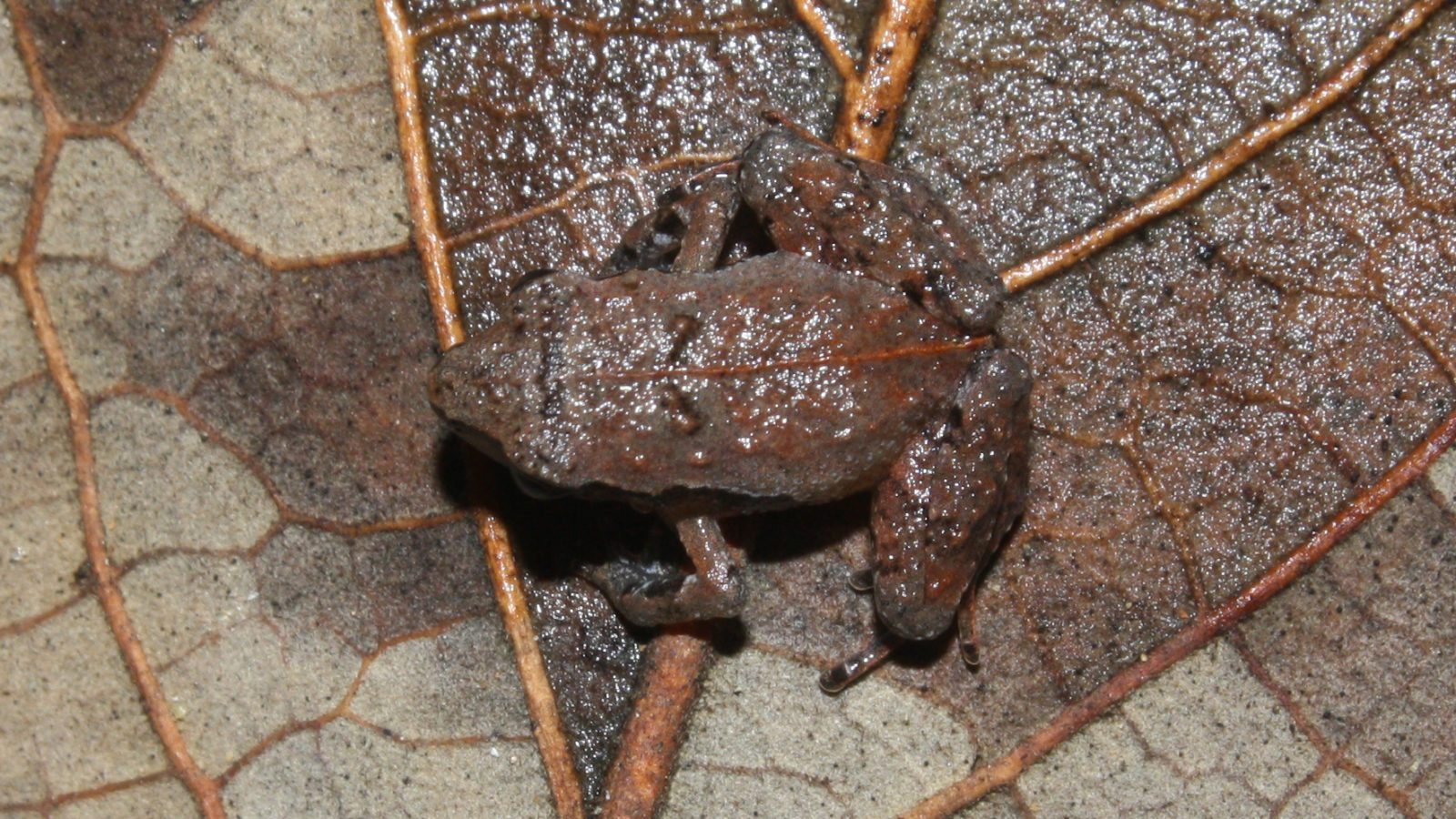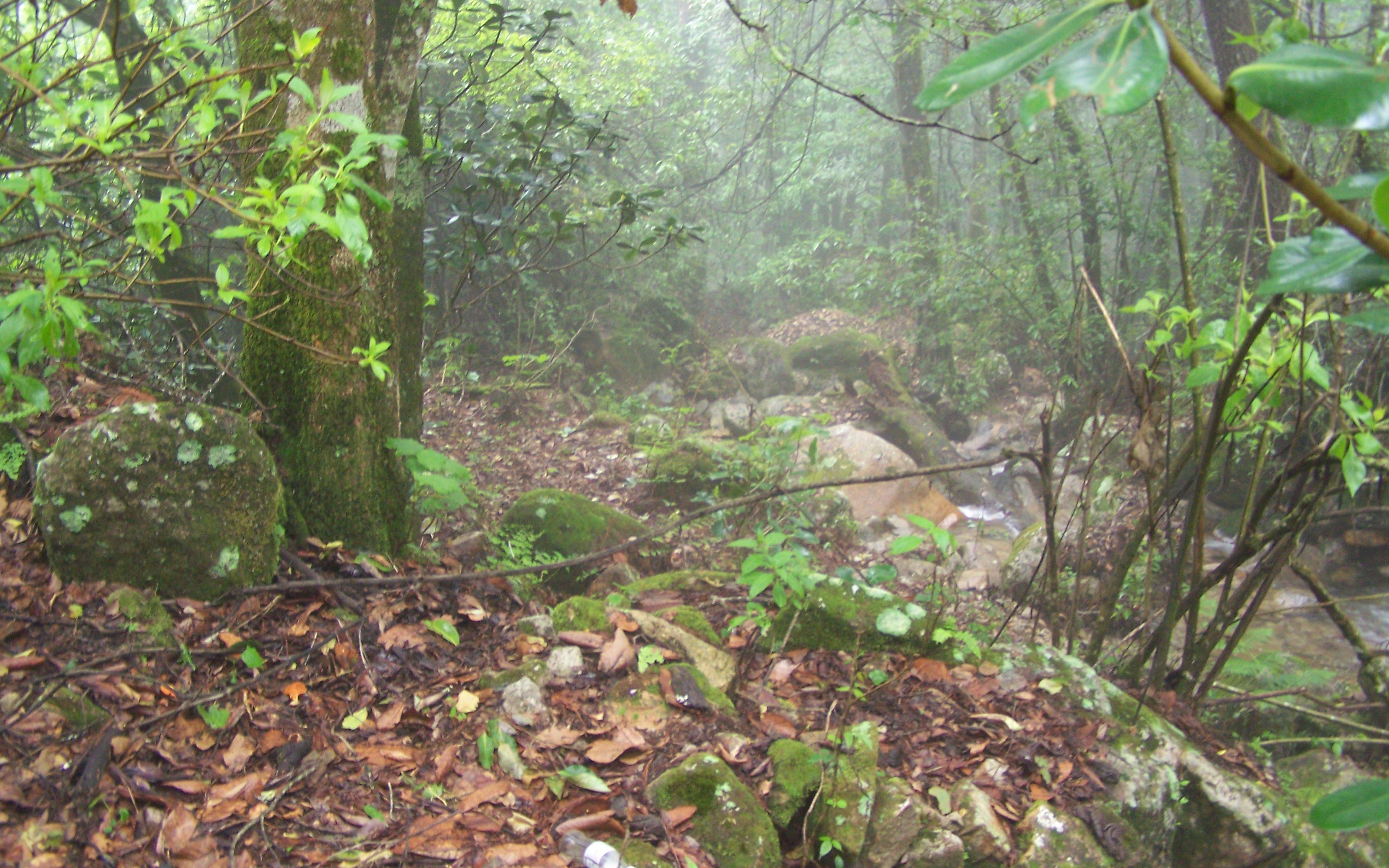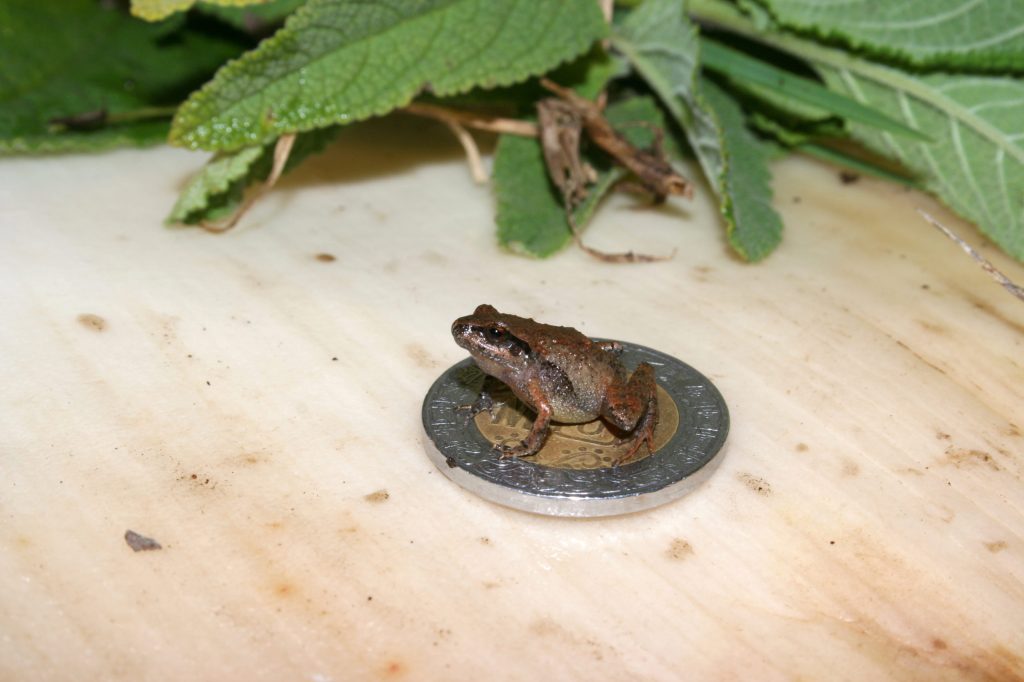Some offspring, like killdeer shorebirds, are replicas of their parents. The ever-feathered and extremely protective adult chirpers nesting in neighborhood rock gardens this time of year have chicks that look exactly like smaller versions of themselves.
The hatchlings even have notable black neck rings like their parents. Same thing could easily happen with amphibians. That’s why some small frogs in Mexico were once thought to be the babies of big frogs, but they’re not.
Research emerging from Mexico proves that and more. These newly discovered mini frogs are monumental by design.
“We knew we didn’t fully understand the diversity there,” says Tom Jameson, University of Cambridge Department of Zoology Ph.D. researcher. “There was probably a lot more going on. We wanted to try and untangle the mystery of what’s going on with these frogs in Mexico.”
Jameson and his team didn’t enter a rainforest to do their work. They went to a modern-day lab. The old-school field work was done years ago. That’s what Eric Smith did in the 1990s when he collected samples in Mexico as a graduate student. His specimens are stored in the Amphibian and Reptile Diversity Research Center at University of Texas at Arlington, along with 250,000 other specimens. Another researcher added to Smith’s samples a decade or so later then one of Smith’s students added to the collection more recently.
“Every time we are out there, we know there are many undescribed species of many things,” says Eric Smith Ph.D., University of Texas at Arlington associate professor and herpetology curator. “You collect things and then when you have time and money, you start polishing the research. It’s almost like building a puzzle. To study a group, you need a lot of samples from that group and you don’t describe it until you have a more complete picture.”
When the complete picture developed with publish-worthy results this spring, it unveiled a major surprise: A new family of frogs, including six new species.
They’re called mini frogs and they’re unique in many ways.

Coin-Sized Frogs
The mini-frog study samples are skeletal after being stored for so long, which usually doesn’t entice researchers but in this case that’s exactly what they wanted. Bones. Examination of 500 samples involved everything from microscopes to CT scans to verify that Mexican mini frogs are not the babies of big frogs.
They are their own frogs.
They, of course, grow into sexual maturity, but as they do that, their body size doesn’t grow. They start small and they stay small, even after they have their own babies.
They’re so mini, they can stage on a coin and they could live on that currency for life if it suited them. They’d never outgrow it. It’s called paedomorphosis and it’s what happens when a specific population retains juvenile characteristics.
“They are most likely Mexico’s smallest frogs and one of smallest frogs in the world,” Jameson says. “Being that small means they’re doing all sorts of interesting things. When life gets this small, weird things start to happen. They don’t fossilize and there are no tadpoles.
No Tadpoles
Mini frogs hatch similar to the process of a bird hatching from an egg. When their prenatal shell cracks, they come out hopping like full grown frogs.
There’s no tadpole stage for Mexican mini frogs. They go from egg to leg with no swim phase between. It’s called direct developing and it could be climate related, but most likely not climate change related.
“Nearly all these tiny frogs are exploiting this niche in the ecosystem,” Jameson says. “They are leaf litter specialists. By being tiny they can live under leaf litter. It’s humid and moist, but there isn’t a river for tadpoles.”
Life in Leaf Litter
Mini frogs feed numerous forest creatures, making them vital to ecosystems. They need moisture to survive, but that doesn’t mean they require rivers. They actually don’t have much access to water. (Lack of pools is probably why they skip the tadpole stage.)

Their moisture is on the ground in leaf litter. This is where the discovery gains momentum. Scientists are wondering what else is in the leaf litter that they don’t know about yet. It’s prompting a scramble to continue searching under the cover and ahead of the cuts that clear forest faster than research can resolve mysteries.
“We aren’t the only ones who have discovered frogs in the last month,” Jameson says. “When we find them, we know they are endangered because they are so small. They might go extinct as soon as we find them because someone might clear one hillside for a mine or a farm.”
Mini frogs are microendemic. Where endemic species occur in large areas like a state or a country, microendemic species occur in small areas like one hillside or one valley. Mini frogs are so site specific, they might be on one mountain and not the next, one field and not the other.
“We can’t protect anything if we don’t know that it’s there in the first place,” Jameson says. “What we thought was maybe one widespread species of common brown frog is actually a whole new level of diversity. Frogs doing their own thing all over mountain spots in Mexico that are not protected and there’s no protected areas anywhere near them. It changes the story of diversity and shows that a lot more needs to be done to protect them.”





i have hundreds of mini frogs in my garden appearing end June to early July.
they all seem to disappear within a 3 to 4 week period. what is their actual life span?
I rescued the tiniest frog lve ever seen. Im worried to care properly. I put him in a large mason jar and laid the lid on. But we were killing mold in the concrete at the apt. next to mine. I put three rocks and a little bit of filtered water. I also put the shell of an achasia bug to hide in. But should l add something or do anything else? I have no idea how to feed him. Suggestions? My email is wimberleydebra@gmail.com. l do not wish to join anything. Please respect my privacy….thankyou.
Many years ago I was visiting a pond on the farm I lived on in south central NY State and there were thousands of 1/4″ frogs in and around the water by the shore mating. Fully developed frogs. This was late May/early June. I caught one and couldn’t believe it was fully developed at such a small size. I stayed there and watched for hours. I never saw that spectacle again.
In the last 2 weeks I have encountered some of these in west Michigan. They are very tiny, and definitely not baby toads which come from tadpoles. Thet are very fast and extremely hard to catch. These are about 3 mm in size.
Wow, my whole concept of “frog” has just been upended. Be careful out there, little guys!
Glad to see research devoted to these little fellas. I grew up in north western SC and would see mini frogs (more like tiny toads) in my many jaunts through the woods as a great child explorer. I live (and work) in the mountains of western NC now and have seen them on occasion in the forest. It was a little stressful walking a section of a trail and avoiding stepping on them as they would spring from the cover of their camouflage to land where I had intended to step. Of course, what I was seeing could well have been (and I continue to assume were) juvenile toads.
Interesting in light of the fact that just this year, about a month ago, we started seeing tiny toads on our property, not in Mexico but in NW GA, USA. We’d assumed these were just baby toads, though we’ve never seen them before — and we are VERY much aware of our toads and frogs. This article casts doubt on whether or not they’re really babies.